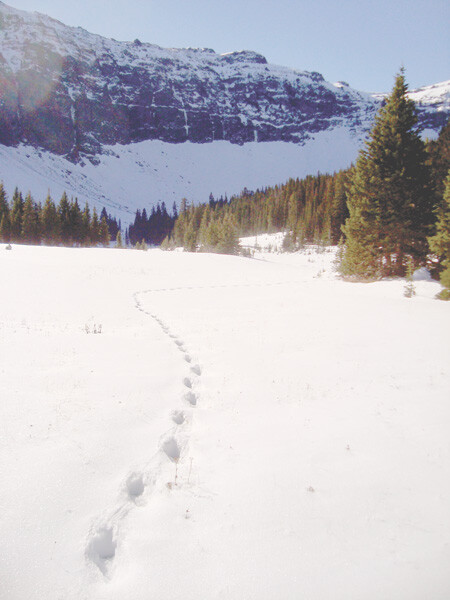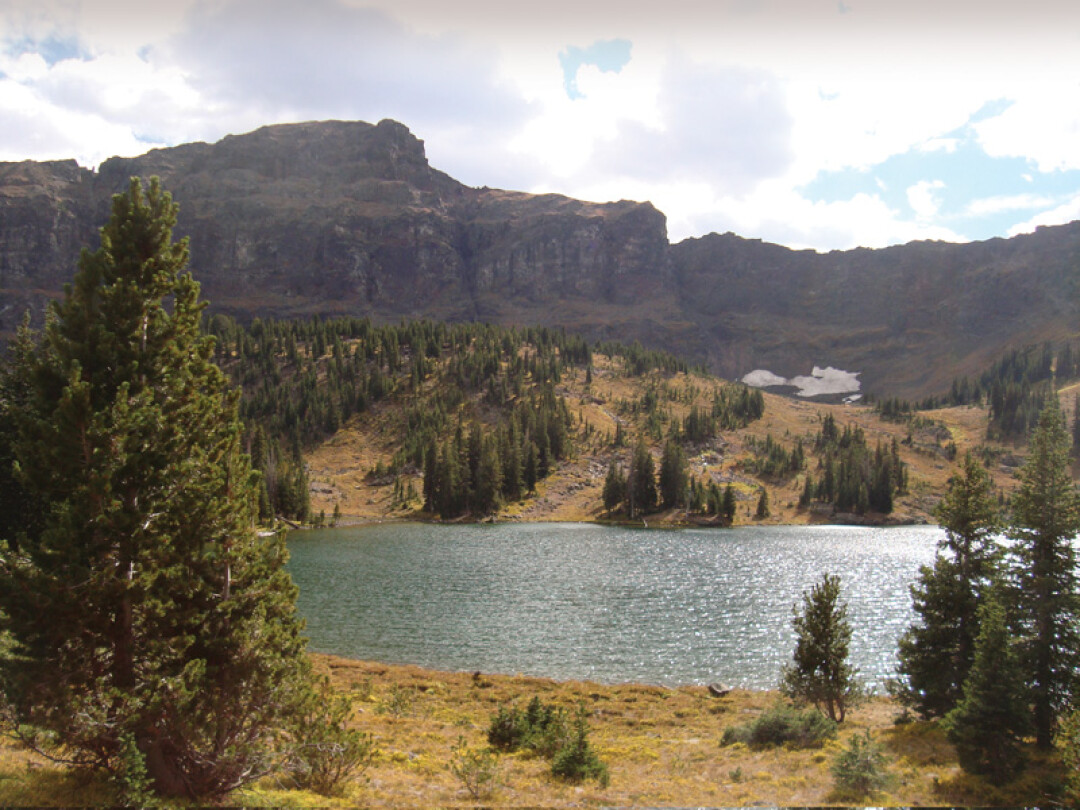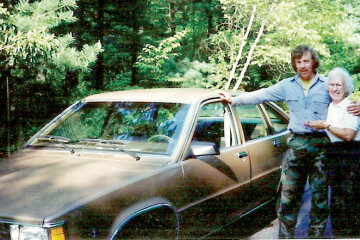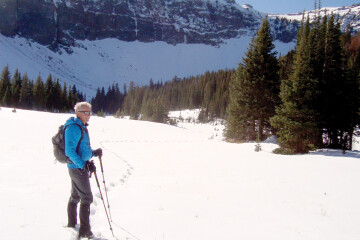The Gallatin Range: Bozeman's Big Back Yard
Next time you look south of Bozeman to the mountains that border our beautiful valley, consider what you are seeing.
Rising in a riotous mass of sharp peaks, craggy ridges and vast alpine plateaus, split by steep canyons, decorated with clear, cold tarns, draped with snow drifts, clad with vibrant evergreen forests, humming with creeks and waterfalls…it’s the Gallatin Range!
Named for the Gallatin River, which was named by Lewis and Clark for Albert Gallatin, Secretary of the Treasury under Thomas Jefferson, this magical mountain range beckons beyond Bozeman’s ever more urban borders like some Rocky Mountain Shangri-La.
From the towering Hyalite Peaks near Bozeman to the Madison River Valley, the verdant and diverse Gallatin Range forms the spine of an unbroken 525,000-acre roadless wildland, unsurpassed in rugged beauty and teeming with native fish and wildlife.
Mid-elevation habitat in roadless drainages like Porcupine and Buffalo Horn creeks offers some of the best wildlife habitat anywhere in the lower 48 states. These pieces of paradise have been saved three times from developers and sheltered some of the last elk herds in the nation a hundred years ago.
Sadly, the Gallatin Range is the only major mountain range in Greater Yellowstone with no designated Wilderness. The Lee Metcalf Wilderness originally included a Gallatin Range component, but political tradeoffs left only a Wilderness Study Area (WSA). The 151,000-acre Hyalite-Porcupine-Buffalo Horn WSA, set aside in 1977, remains in limbo, with Congress yet to decide its fate.
The entire roadless area, over 220,000 acres outside Yellowstone, deserves Wilderness status. This should be a crown jewel of our nation’s Wilderness Preservation System.
The Gallatin Range is critical habitat for grizzly bears and all wilderness-dependent species in Greater Yellowstone, including bighorn sheep, mountain goat, elk, wolverine, wolf, and cougar. Some of the last best habitat for grizzly bears is found in the canyons and meadows of this paradise, and the threatened lynx still survives in the Gallatins. The range contains essential wintering and birthing grounds for some of the nation’s largest elk herds. Twenty-three plant and animals species listed as threatened, endangered or sensitive exist here. The Gallatins are also part of an essential wildlife corridor linking the Yellowstone region with the Northern Continental Divide ecosystem and points north to the Yukon.
How many towns offer quick access to such stunning high country as Bozeman does? Think of it: You can be at the Hyalite trailhead in an hour and embark on a week-long walking journey along the top of one of the wildest, most spectacular mountain ranges in the US. And, you can keep going into Yellowstone, or into the rugged reaches of the Madison Range, and beyond that into the Centennials or the Tetons…
Yet such journeys are no cake walk. That is part of the allure. In a world all too paved and tamed, the Gallatin Range can be a punishing, stormy place, the trail hard to follow, the bugs fierce, the bears intimidating (even if you never see one). When my wife and I embarked on a backpacking trip along the Gallatin Crest on a sunny July first, little did we know we’d soon be falling into rushing, ice cold creeks and post-holing in still-deep, soft snow. But we’d not have missed a minute of it.
The Gallatins offer friendly, peaceful experiences as well…a picnic at a trailhead, a run with your dog up Bozeman Creek, or an evening stroll on Kirk Hill. This range is many things to many people, offering world-class ice climbing, multi-pitch rock climbing, remote lake fishing, backcountry skiing and snowboarding, rustic rental cabins, horseback riding among spectacular scenery, challenging mountain biking, and some of the nation’s best big game hunting.
By any measure, we are extremely lucky to live near a landscape with so much to offer.
Human history goes back at least eleven thousand years in the Gallatins. Native Americans visited these mountains to hunt bighorn sheep and elk and to harvest obsidian and chert for making stone tools, leaving evidence in the form of lithic points and rock chips. The Lewis and Clark Corps of Discovery traveled just north of the Gallatin Range when Clark led a return party over Bozeman Pass in 1806.
Fur trappers explored the Gallatin Range during the heyday of the mountain men. With the settlement of surrounding valleys, local ranchers trailed sheep and cattle into the high country to fatten them up on sweet mountain grass. The building of transcontinental railways led to the giveaway of hundreds of square miles of the best timber land in the Gallatins to private companies which, combined with a frenzy of logging on public forests after World War II, resulted in an overbuilt road network in much of the Gallatin Range and a distinct lack of large trees. The scars from this logging can easily be seen from Bozeman.
Yet the Gallatin Range vegetation mosaic is still rich and diverse: a complex of Douglas-fir, aspen, and foothills prairie grace the lower elevations, with scattered juniper and limber pine. Higher up, aspen and Douglas fir are replaced by lodgepole pine, Englemann spruce and subalpine fir, mixed with rich mountain meadows. Near treeline, threatened whitebark pine becomes dominant on many sites, and well-developed alpine tundra characterizes the areas above 9,500 feet.
The 25,980-acre Gallatin Petrified Forest is found close to and within Yellowstone’s northwestern corner. This is the world’s most extensive fossil forest, with 30-million-year-old stumps buried by Eocene lava flows, still anchored and upright atop these wild ridges. On the west side of the range, Madison limestone outcrops provide a stunning backdrop to the blue-ribbon fishery of the Gallatin River.
The Gallatin Crest collects an annual average of three hundred inches of snow. This snow pack feeds clean, cold mountain streams, lakes, wetlands, and lush vegetation. Rivulets of snowmelt, spring rains, and summer thunderstorms coalesce into the headwaters of some of our nation’s greatest rivers. West side streams such as Buffalo Horn, Porcupine and Moose Creeks swell the upper Gallatin and Madison Rivers, keeping them clean and cold to sustain world famous native fisheries. The east side streams such as Tom Miner, Rock and Big Creeks drain into the Yellowstone, another Missouri tributary and the longest free-flowing river in the contiguous United States.
Although far too many roads penetrate many drainages, a network of trails leads the quiet traveler deep into serene and remote high country. The Gallatin Crest Trail, one of the finest mountaintop trails in the nation, offers a challenging route from Hyalite Canyon to the Yellowstone border. Within Yellowstone Park, excellent trails traverse the range east to west, but off-trail travel in the Gallatins is mostly prohibited except during winter (to provide secure grizzly bear habitat), meaning many peaks are only accessible when buried in snow.
What are you waiting for? You can see it from your yard and from downtown. It’s your land, and much of it is as wild and remote as anything in the lower 48. I’ll look for you in the high country of the Gallatin Range.





